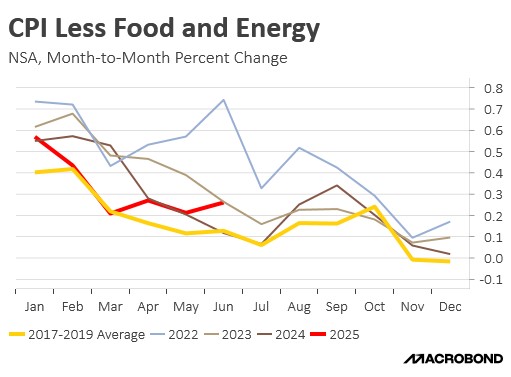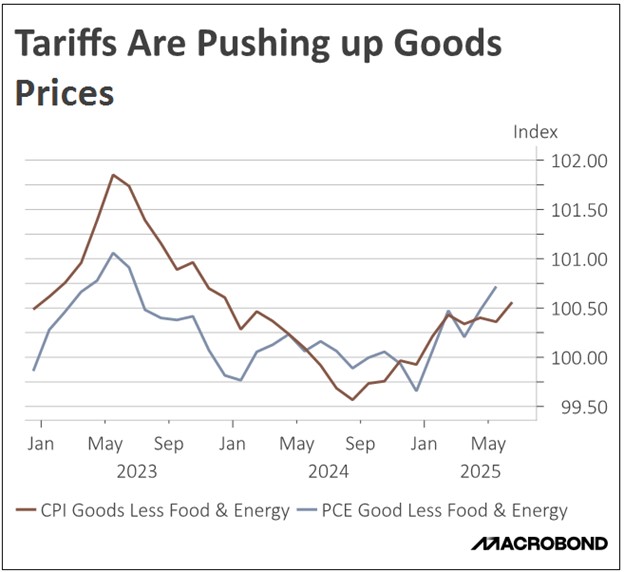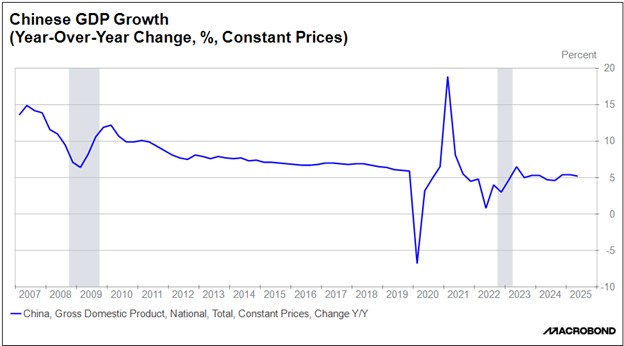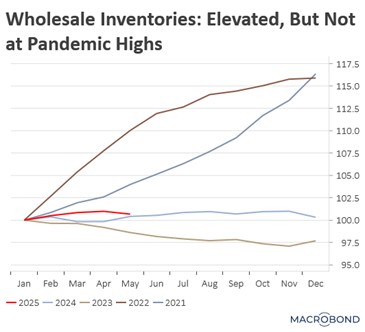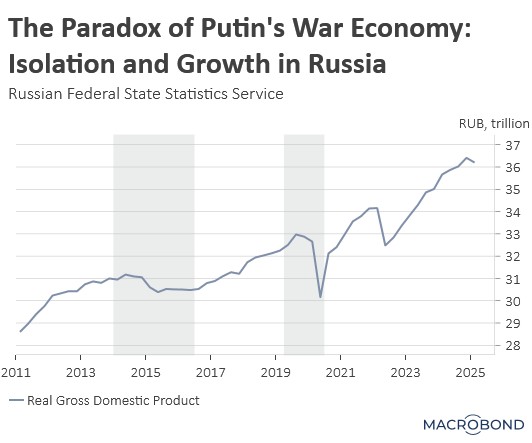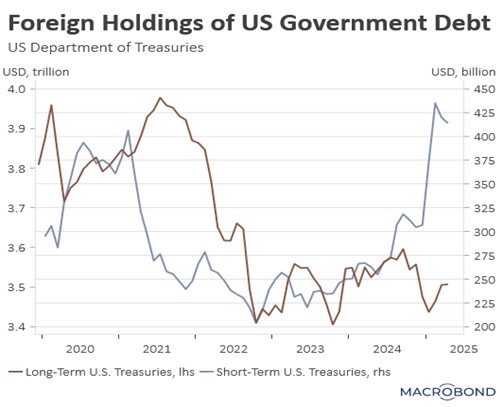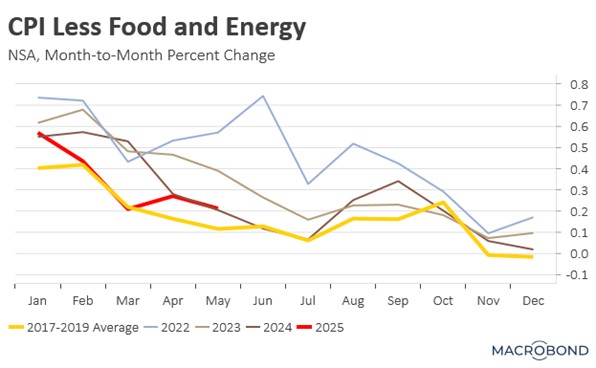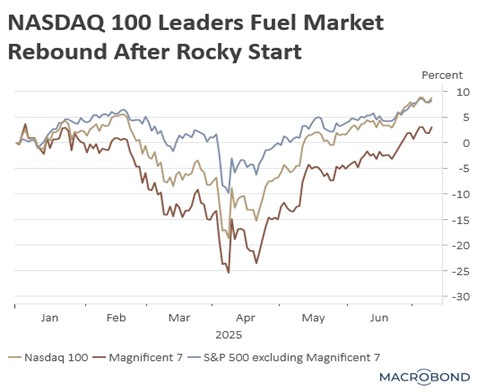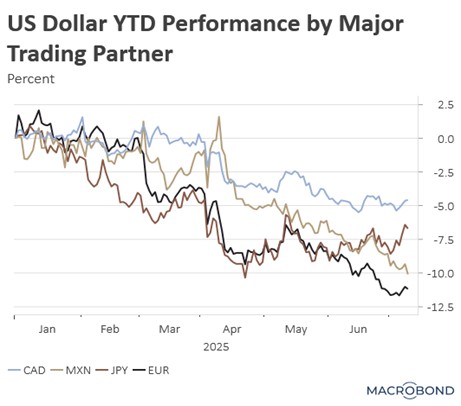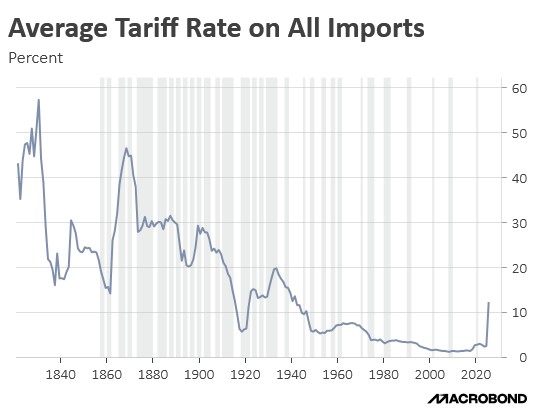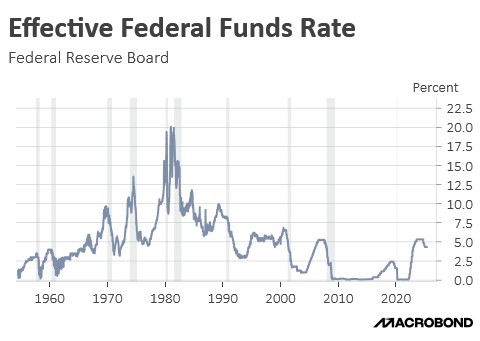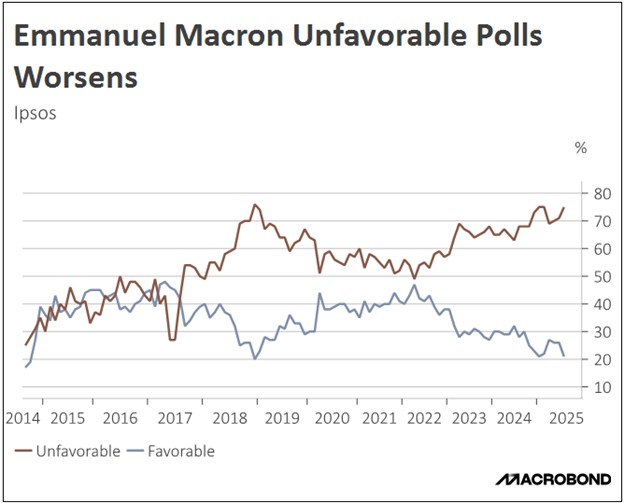by Patrick Fearon-Hernandez, CFA, and Thomas Wash
[Posted: 9:30 AM ET] | PDF
Good morning! The market remains squarely focused on the latest earnings reports as we navigate through this busy season. Today’s Comment will highlight where the effects of tariffs are becoming more apparent in the inflation data, provide updates on ongoing trade discussions, and cover other market-moving developments. As always, we’ll include key domestic and international data releases to keep you informed.
Tariff Pressure: Although inflation was lower than expected, there are increasing signs that tariffs are beginning to drive prices higher.
- The Consumer Price Index (CPI) rose to 2.7% year-over-year in June, up from 2.4% the previous month, marking the fastest pace of inflation since February. While the increase aligned with market forecasts, it represented a notable acceleration from May’s reading. Core CPI, which excludes volatile food and energy prices, climbed more modestly, edging up from 2.8% to 2.9%, just below the consensus estimate of 3.0%.
- While the inflation report appears benign at first glance — with the increase largely driven by volatile year-over-year base effects — underlying trends indicate inflation may be diverging from the disinflationary path observed earlier this year. As the chart below illustrates, June’s monthly increase was the largest since 2023, signaling potential reacceleration.
- Much of the increase has been driven by goods subject to tariffs, including household appliances, toys, and home furnishings. Additionally, there are also signs that core services inflation, which excludes housing, is beginning to heat up, suggesting that rising input costs — and potentially even wages — are picking up again.
- While the inflation uptick was widely expected, debate persists about its duration as the Fed weighs policy changes. Advocates of the transitory view maintain that price pressures will moderate as businesses adapt to new tariff regimes. Skeptics, however, warn that diminished competition may encourage firms to exercise greater pricing power, potentially sustaining higher inflation.
- The latest inflation reading will likely discourage many FOMC members from supporting a July rate cut. As a result, the September meeting may now be the earliest they will consider easing policy, barring another significant inflation setback. We’re closely watching the increased reliance on estimated data rather than actual inputs within the inflation index, as this could undermine the Fed’s confidence in the readings.
Indonesia Trade Deal: President Trump announced a trade deal with Indonesia, but the final details of the arrangement have yet to be disclosed.
- In a post on Truth Social, the president announced that Indonesia has agreed to reduce tariffs on all US exports while committing to purchase $15 billion in American energy products, $4.5 billion in agricultural goods, and 50 Boeing aircraft. In return, the US will raise its tariff rate on certain Indonesian imports from the current 10% to 19% — still well below the potential maximum of 32%.
- While final details have not been revealed, the Indonesian government has confirmed that a deal was reached. Speculation suggests the arrangement may grant preferential treatment to Indonesia’s copper exports (potentially a reduction in rates or an outright exemption) when tariffs are scheduled to increase to 50% after August 1.
- Tariffs are gradually increasing with minimal market reaction, suggesting the economic impact may already be priced in or that the market is awaiting earnings data for clearer judgment. While progress on trade deals boosted confidence last quarter, resilient earnings and positive guidance will be key to stabilizing market expectations now.
Trump Trade Threats: Having secured the Indonesia trade agreement, the administration is now intensifying its global trade negotiations.
- President Trump has announced potential increases to import taxes on pharmaceuticals and semiconductors, set to begin by month’s end. This escalation in tariff threats represents a strategic push to pressure trading partners into negotiations while encouraging manufacturers to reshore operations. While specific rates remain undefined, the administration has floated pharmaceutical tariffs as high as 200%. Semiconductor duties could rise to approximately 25%.
- Meanwhile, signs of international pushback are emerging. The EU has accused the US administration of stalling negotiations and has finalized a $72 billion list of potential countermeasures, including tariffs on bourbon, automobiles, and Boeing aircraft, should talks with the US fail. Separately, Japan appears increasingly reluctant to engage, likely due to dissatisfaction with the Trump administration’s demands in exchange for a deal.
- While we anticipate ongoing trade negotiations in the coming weeks, there is a fear of renewed conflicts. The primary concern is the administration’s apparent prioritization of speed over comprehensive agreements. Though this may serve as a negotiating tactic, it risks escalating tensions with our major trading partners and potentially laying the groundwork for future trade disputes.
Earnings From Banks: Leading financial institutions delivered strong Q1 earnings, with their reports shedding new light on the state of consumer spending patterns.
- Several major financial institutions exceeded earnings estimates this week. On Wednesday, Bank of America reported stronger-than-expected results, indicating that the bank remains in good financial standing. This performance echoes positive results from peers including Goldman Sachs and Citigroup. However, bank executives did voice some cautious notes during their earnings calls.
- The banking sector’s strongest performance driver was supported by increased market activity due to trade uncertainty, which boosted trading revenue as investors capitalized on shifting market sentiment. Furthermore, household credit quality remained stable, with consumers continuing to meet payment obligations while increasing credit utilization. However, challenges emerged as some commercial clients experienced higher write-offs, and lower-income segments began showing signs of financial stress.
- The banking sector’s strong performance thus far is encouraging for the broader economy, given that recessions typically stem from financial system vulnerabilities. With both corporate and household balance sheets remaining healthy, the likelihood of a severe economic downturn appears limited in the near term.
Middle East Turmoil: Israel has ramped up attacks in Syria as it looks to protect a minority group in the struggling nation.
- On Wednesday, Israel launched an airstrike targeting the entrance of Syria’s military headquarters, citing the need to protect the Druze minority amid ongoing clashes with Bedouin tribes in the Sweida province. The operation also served to strengthen Israel’s security position along its border regions.
- The ongoing conflict underscores the transitional challenges of the Syrian government in asserting authority over the region following the fall of the Assad regime. While we do not anticipate a broader regional war, we are closely monitoring the situation due to its potential implications for global commodity markets.



